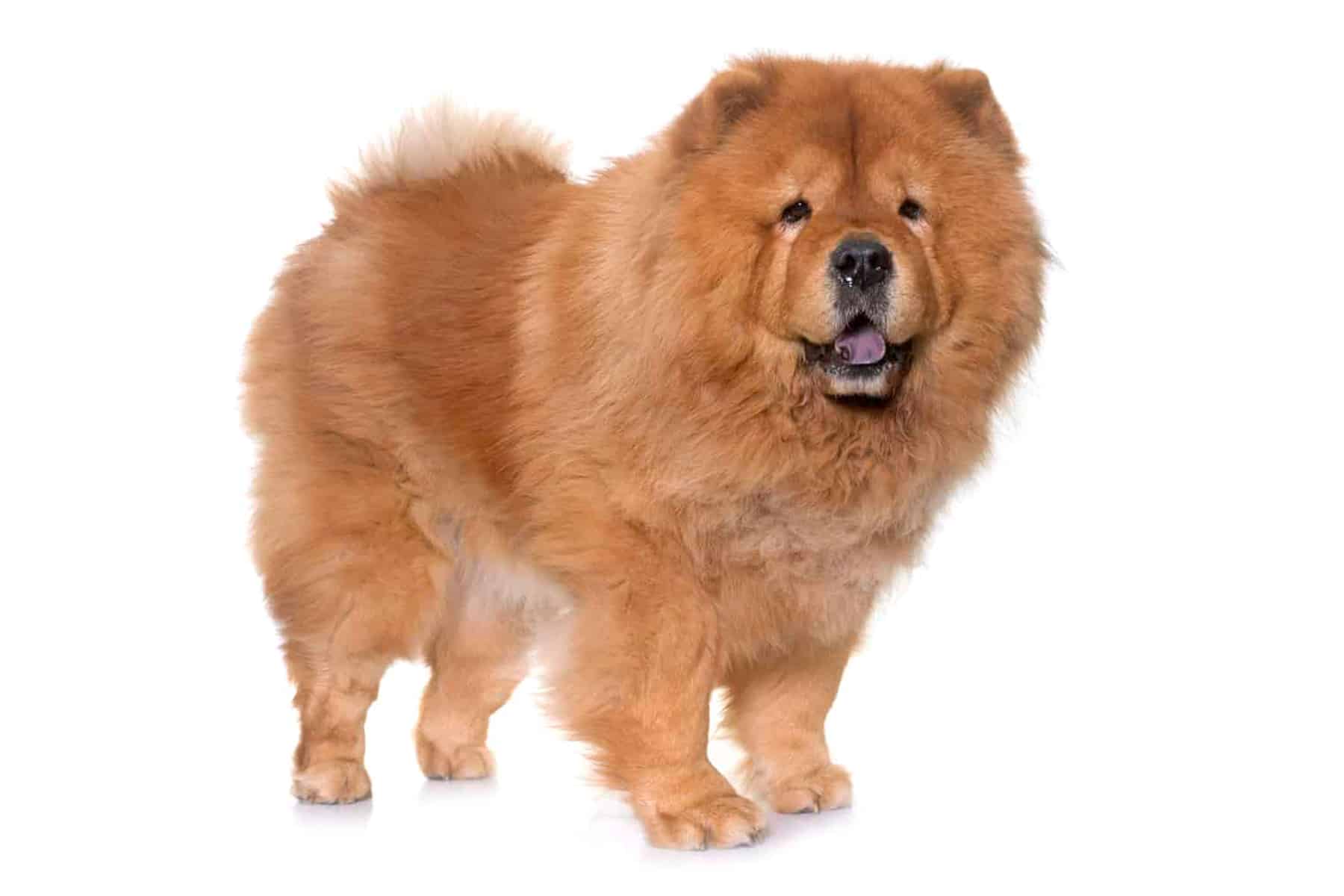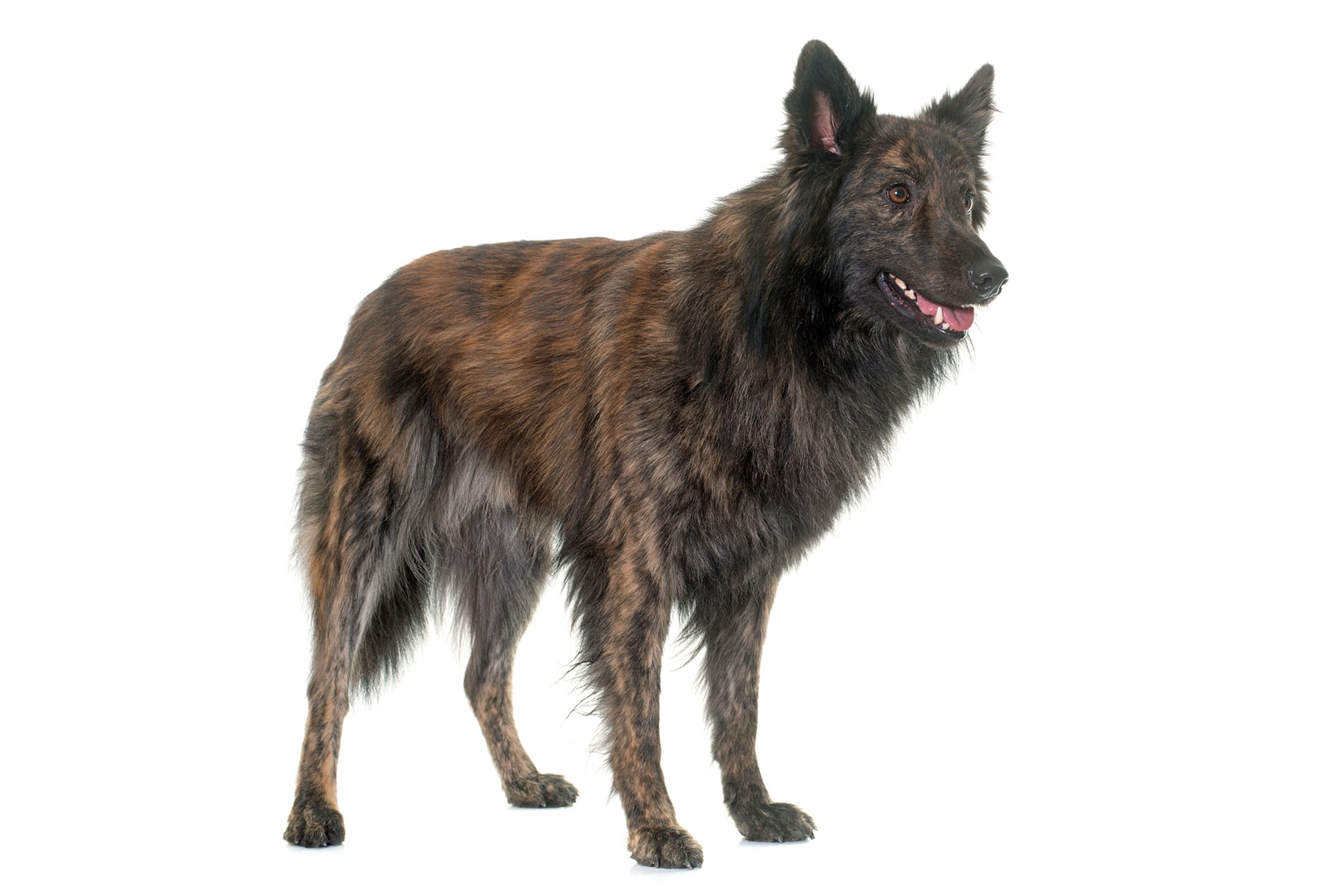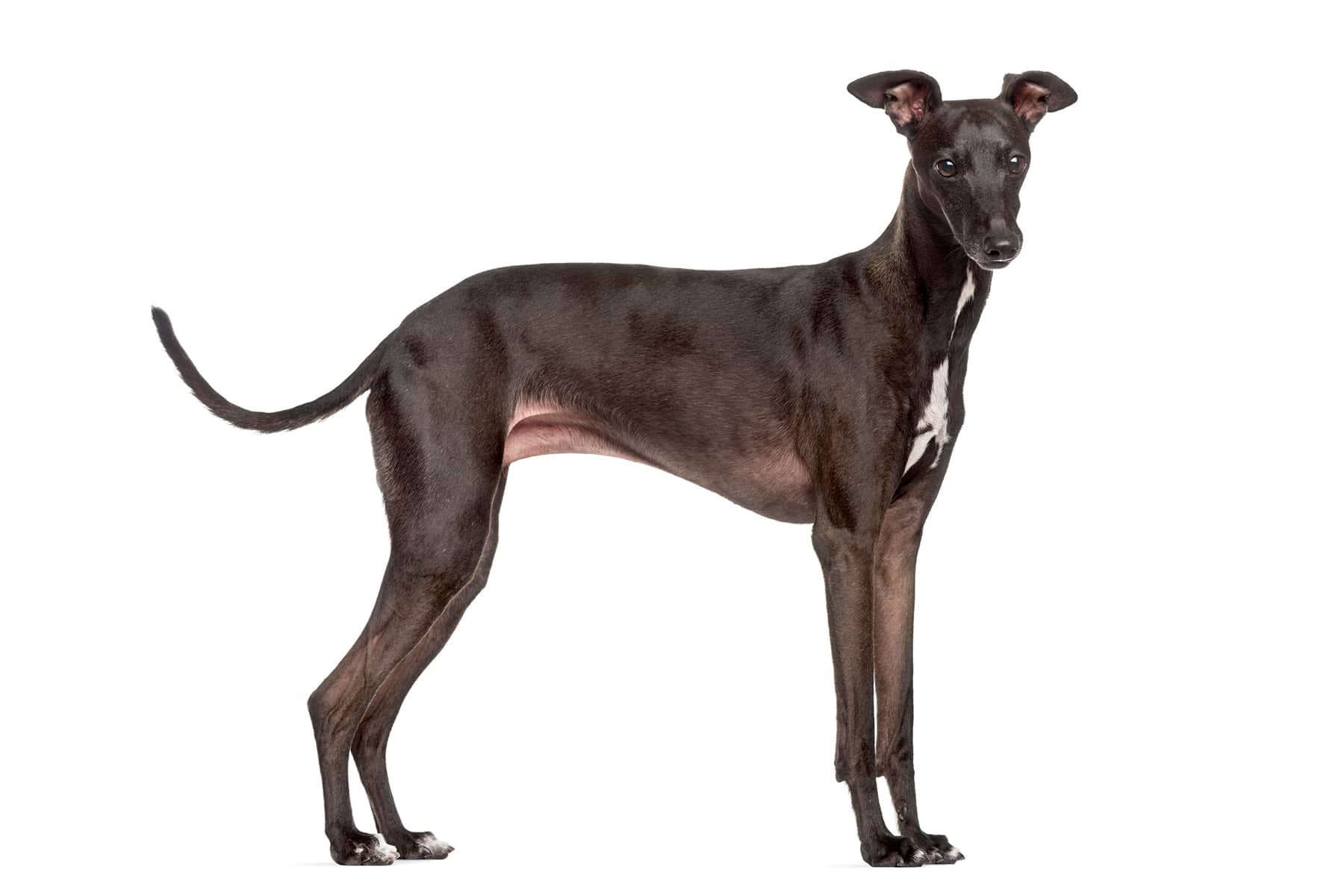Welsh Terrier
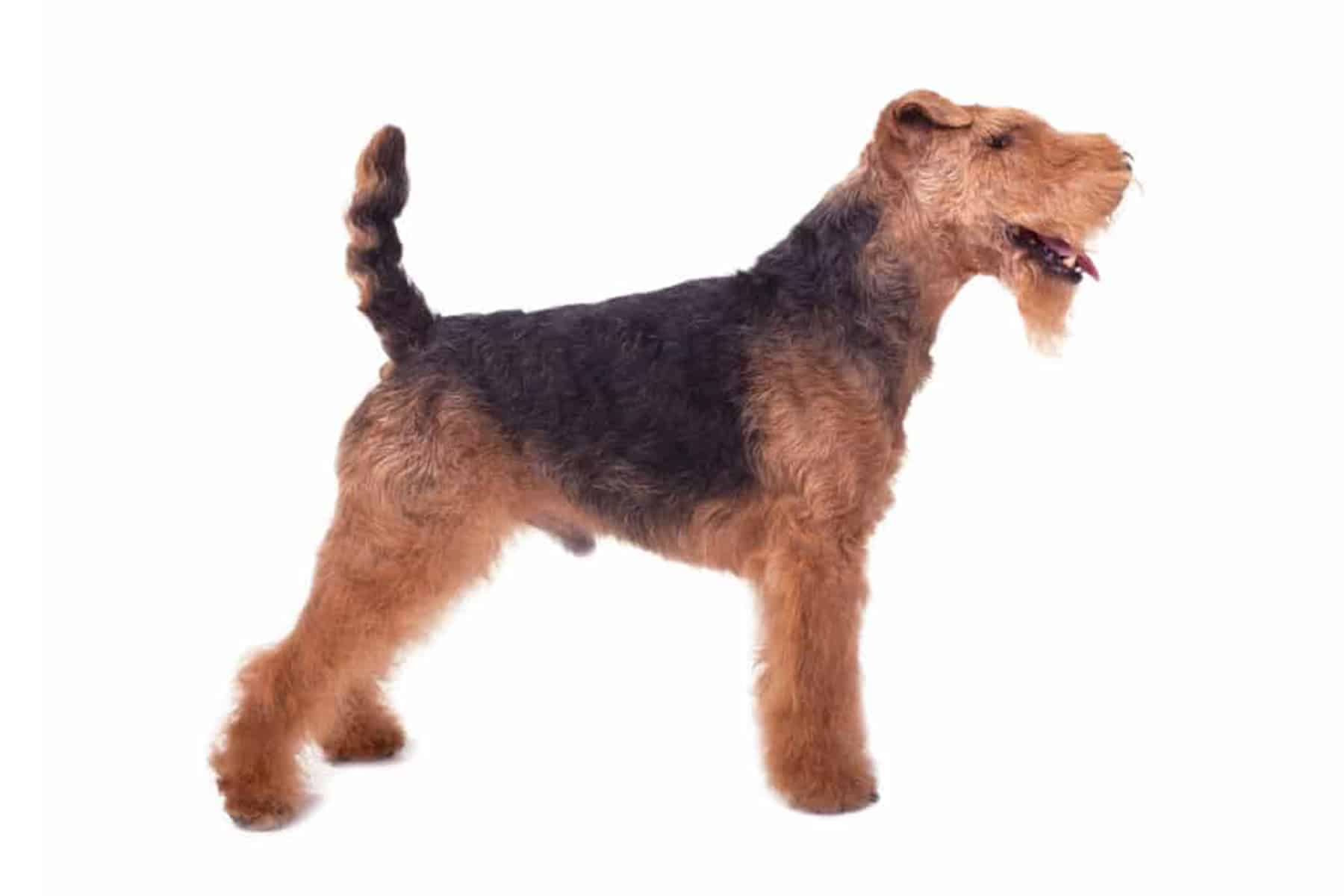
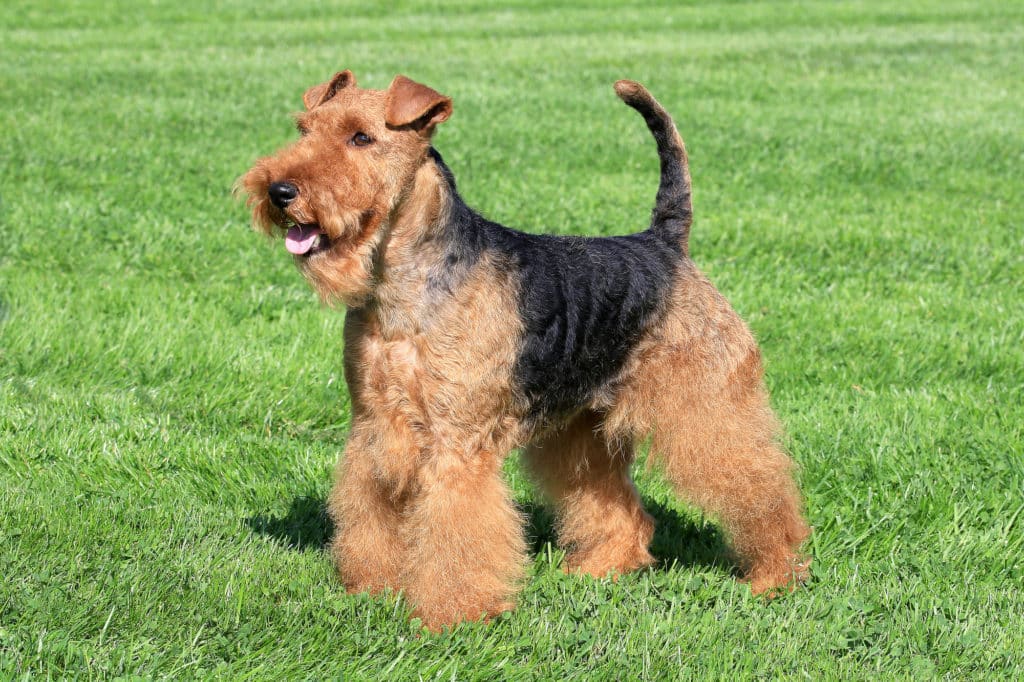
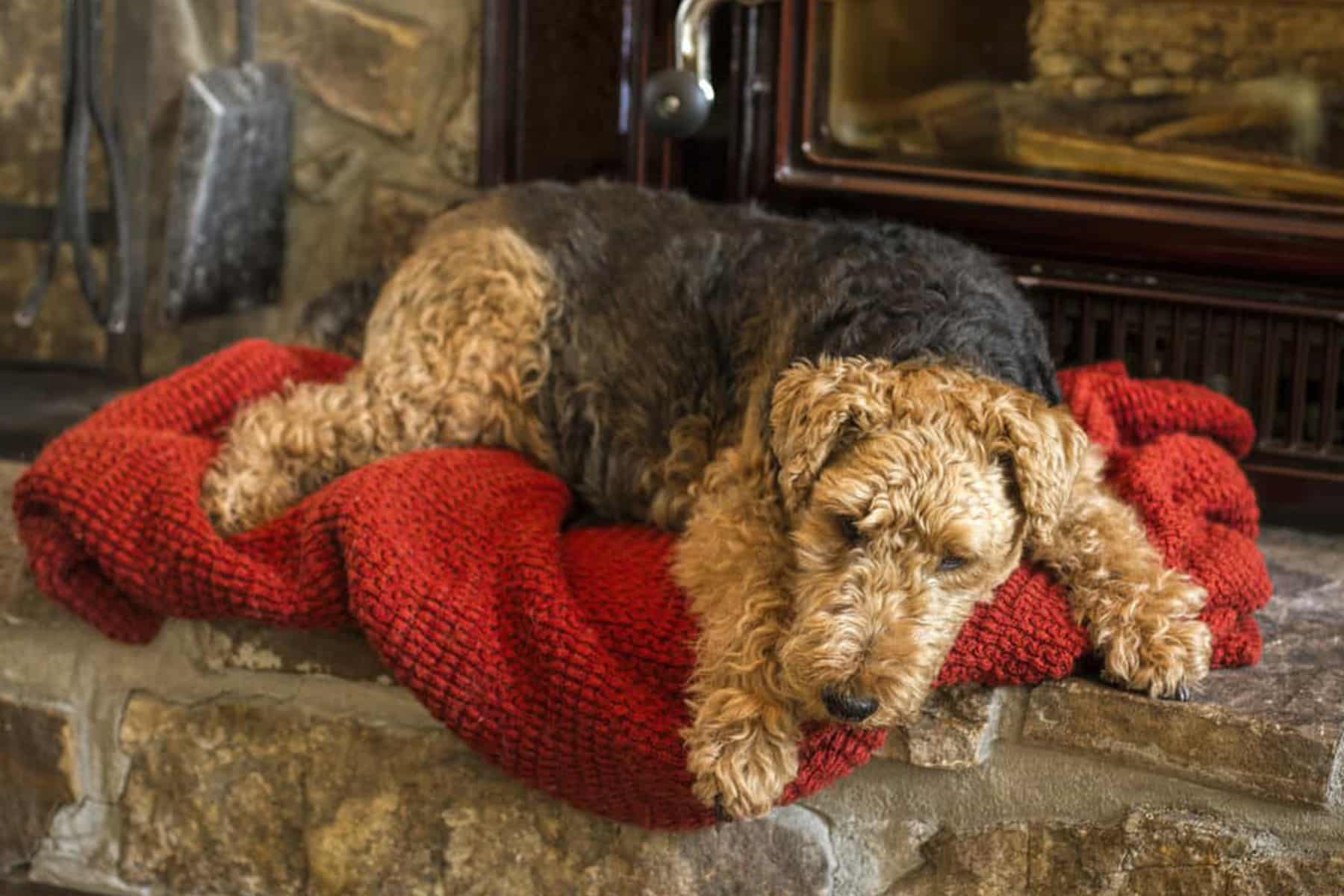
Temperament:
The Welsh Terrier is a well-known British dog breed. It is recognized by the FCI and is assigned to Group 3 (Terriers). With an average height of approx. 39 cm, the Welsh Terrier is one of the medium-sized dog breeds. These hard-working hunting dogs reach an average weight of approx. 9 - 11 kg. In good health, their life expectancy is around 12 to 15 years. These cheerful four-legged friends are popular family dogs. They get on well with children, are very docile and agile. However, they also have a mind of their own. So if you are looking for a dog with personality, this is the breed for you.
Characteristics
The Welsh Terrier has a very distinctive appearance. Visually, it is very similar to the Airedale Terrier. The main difference between the two breeds lies in their body size. The Welsh Terrier is significantly smaller than the Airedale Terrier. It therefore looks like a miniature version, but is a breed in its own right.
Despite its size, the Welsh Terrier is very tall. It has long legs that are covered with plenty of fur. The coat of the Welsh Terrier is one of its most important distinguishing features. It is very dense, smooth and wiry.
The basic colors of the breed are usually black and tan. The middle of the body is usually very dark, while the head and legs have a light golden hue.
Overall, the physique of these four-legged friends is very compact. The head with its strikingly long muzzle contributes to this. The muzzle of the Welsh Terrier is covered with long hair that merges into a beard. The ears are set high and folded forward. The four-legged friends also have very expressive eyes.
The posture of the Welsh Terrier is impressive. He walks very proudly and always with his head held high. The tail is also always carried upright. This radiates great self-confidence. At the same time, the upright posture shows alertness. It is not for nothing that these lovable four-legged friends are considered to be extremely alert.
The nature of the Welsh Terrier initially describes that of a typical terrier. The dogs are very active and full of energy. They have a lot of temperament and are often a little headstrong. Like most terriers, Welsh Terriers are always up for a bit of fun. They like to romp and play and are constantly on the move.
At the same time, the four-legged friends are courageous and completely fearless. Although they are not aggressive, they do not shy away from a fight. Especially not when it comes to protecting their owner or their family. The four-legged friends approach strangers and animals with confidence. You hardly ever encounter these cheerful terriers when they are unsure of themselves.
The Welsh Terrier cultivates an intimate bond with its owner. Once the basis of trust has been established, the animals are affectionate and demand a lot of attention. As the Welsh Terrier is very self-confident, it is not difficult to gain its trust. They are generally not shy of people and approach them alertly and curiously.
These loyal four-legged friends are also very intelligent. They learn quickly and willingly. The Welsh Terrier is easy to train and does not present any particular difficulties. However, it is an advantage to know that these dogs have a mind of their own. This characteristic should not be suppressed, but appreciated.
These active furry friends are full of energy. That's why they need to be kept busy. A daily walk is not enough. Plenty of exercise and excursions into the great outdoors are just the thing for these agile animals. They are also ideal for dog sports.
What's more, you can teach them anything. Their inquisitive nature means they learn tricks and stunts in no time at all. Ideally, you should find a suitable activity for your dog. Because nothing is worse for a Welsh Terrier than boredom.
Coat care:
Shedding:
Energy level:
Trainability:
Children suitable:
The right food
When choosing food, make sure that it contains high-quality ingredients, is balanced and meets your dog's requirements. Age, size or weight, activity and health status play an important role. You should follow the manufacturer's recommendations for the amount of food.
Treats should only be fed in moderation and deducted from the basic diet to avoid obesity.
Puppies can be fed 4-6 times a day. The number of meals should be gradually reduced to 2 per day until the dog is fully grown. A rest period should be observed after meals.
Fresh drinking water should be available at all times.
Health & Care
Keeping and caring for Welsh Terriers is not particularly complicated. The dogs do not make great demands on the size of their living space. They can therefore also be kept in an apartment.
In any case, the prerequisite is that the dog is sufficiently occupied on a daily basis. One good option is to treat the dog as a sports partner. The Welsh Terrier can be taken for a jog or a bike ride. Playing around or using dog toys can also be useful. Another option is to regularly visit dog meadows. Here the agile four-legged friends can play with like-minded people.
When going for long walks in the countryside, the dog's hunting instinct should be taken into account. This can sometimes be very distracting and upset dogs.
The terrier is also ideal for playing with children. It is robust and not too squeamish. He loves to play and still lovingly protects children while they play.
The Welsh Terrier knows how to behave. So you can easily take him with you on trips or to restaurants.
Grooming is also relatively easy. It is advisable to have the dense and wiry coat trimmed several times a year. Trimming removes the dead hair. This is necessary because the hair does not fall out by itself. Otherwise, regular brushing and combing is completely sufficient for coat care.
Eyes and ears should be cleaned regularly with a clean, damp cloth. If the claws do not wear off by themselves, they must be trimmed.
Teeth should be cleaned with a dog toothbrush and dog toothpaste to reduce the risk of tartar and tooth decay. You can also give your dog special chews, bones or air-dried treats such as rumen, scalp or goats.
After every walk, you should check your dog for uninvited guests such as ticks. Paw pads should also be checked for foreign objects such as stones and removed.
It is best to start these physical grooming rituals when your dog is still a puppy so that he gets used to them more quickly.
Suitable accessories
The Welsh Terrier loves all kinds of games. He will be delighted if you buy him a few dog toys. Ball games are particularly popular. Toys for pulling and tugging are also suitable for this breed. However, you should not leave these lively animals unsupervised and alone with the toys. Otherwise there is a risk that they will destroy them out of sheer boredom.
A suitable retreat for the four-legged friends is also a must. The animal needs this to be able to relax. You can provide your dog with a dog mat or a basket with a blanket.
Your Welsh Terrier also needs a collar or harness with lead, water and food bowl, tick tweezers, claw clippers, mild dog shampoo, brush and comb or rubber curry comb, dog toothbrush and cream, a transport box for transportation in the car and a first aid kit as basic equipment. It's best to ask your vet what should be in the first aid kit.
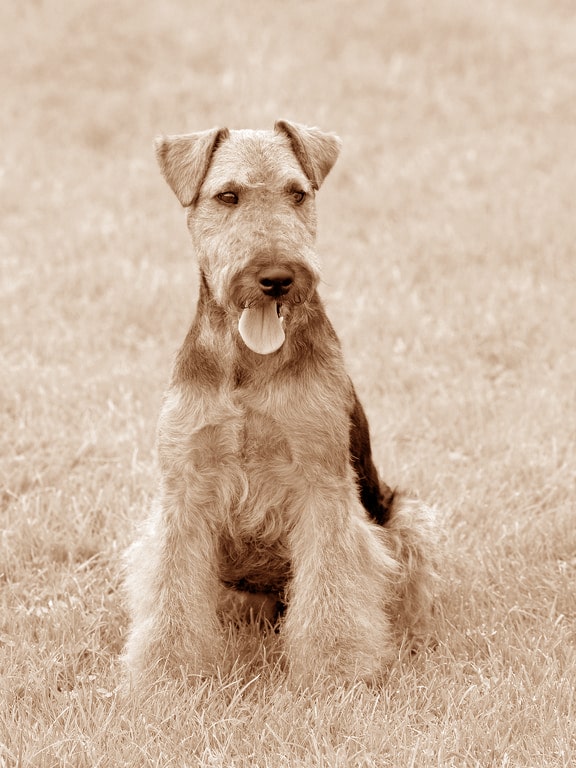
Origin & History
All the early ancestors of the lively terrier come from Wales. The first known origins of this breed date back to the 10th century. It is therefore a very old dog breed.
However, the targeted breeding of this breed only began relatively late. This was at the beginning of the 19th century in England. The first breeding club for Welsh Terriers was founded there in 1886.
These spirited animals were considered a popular dog breed early on. At that time, the dogs were particularly popular as hunters. On large farms, the four-legged friends successfully protected the chickens and small animals living there. They are said to have scared away rats, maggots and even foxes.
The Welsh Terrier only became known in Germany much later. The breed spread here around the beginning of the 20th century. In 1931, the breed was accepted into the German Terrier Club.
Today, the Welsh Terrier is rarely kept as a hunting dog. Instead, it has developed into an excellent companion dog that has not lost its hunting instinct.
